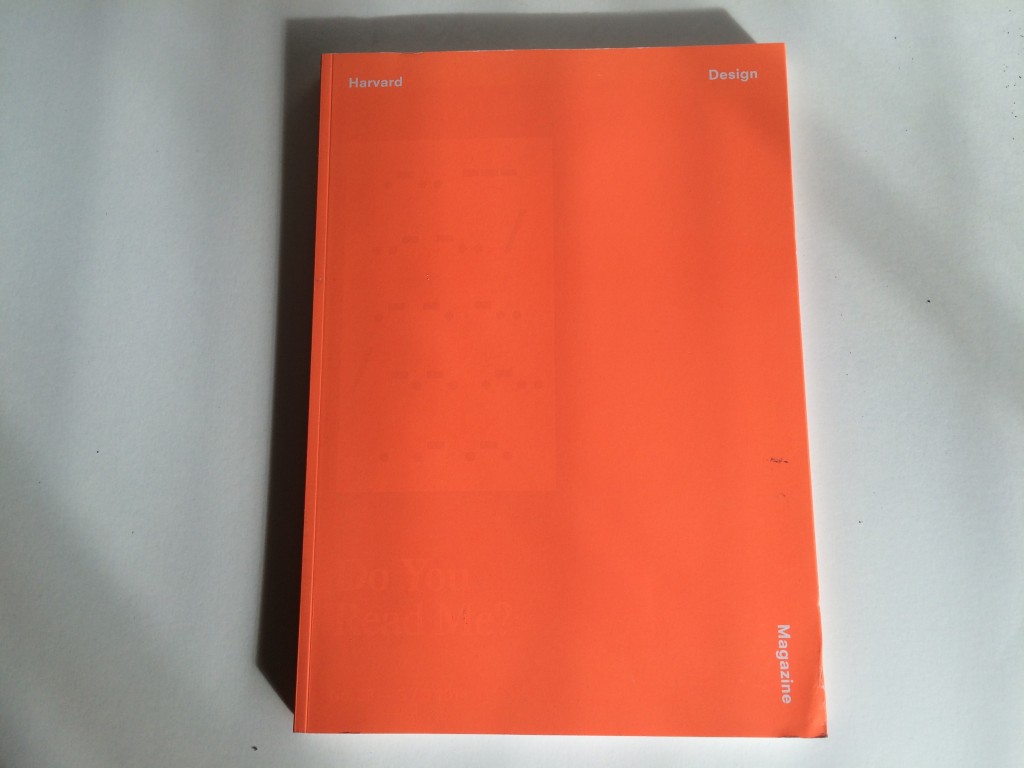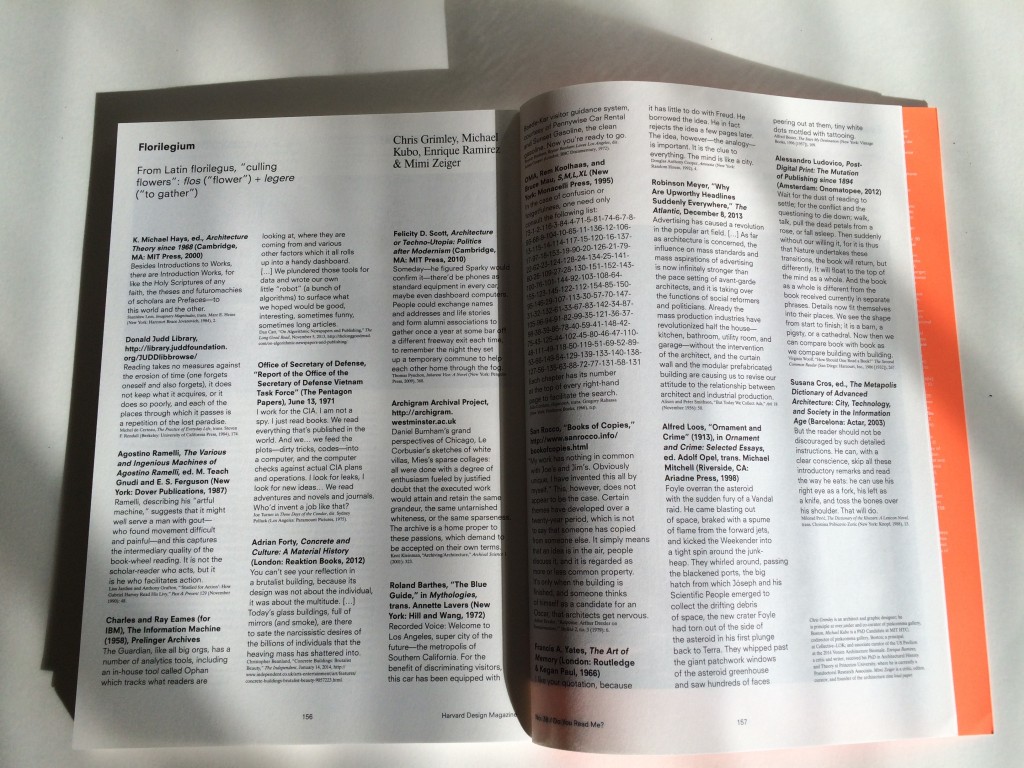Let’s get this bit out of the way: Mexico City is dense, Mexico City is colourful, and Mexico City is a place of contrasts. That is to say, in a haze of pollution you can eat tapas on the roof of a boutique hotel designed by Enrique Norton – or scoff down quesadillas on the street, sheltered by a tarp hung between a fence and a lamp post. The city’s famous outdoor markets sell local crafts and produce alongside imported Chinese sundries. Icons of Mexican modernism are tangled in an urban fabric dating back centuries. For a number of young architects, designers, and curators practicing in its colonias (neighbourhoods), Mexico City is more than clichéd observation; it’s an opportunity to refashion the narrative. Read More …
For issue No. 38 “Do you Read Me?”
Collaborators: Michael Kubo, Chris Grimley, Enrique Ramirez, Mimi Zeiger
Can a tote bag emblazoned with a hashtag spark change? Over the course of the Venice Biennale vernissage one of the unspoken fundamentals of the Rem Koolhaas-curated exposition, as with any trade show, was the swag bag, the free cotton or nylon tote offered as a token of solidarity between viewer and exhibitor. Of the hundreds of bags carried on the beleaguered shoulders of Giardini visitors, from national pavilion to national pavilion, one stood out – a plain muslin tote bag with the words #STAYRADICAL printed in black ink. Read More …
Introverts of the workplace are having a moment. The office furniture company Steelcase teamed up with Susan Cain, author of the bestseller Quiet: The Power of Introverts in a World That Can’t Stop Talking, to create a series of five spaces that address the need for more focus and privacy at work. Read More …
Rojkind Arquitectos transformed the Liverpool department store on Mexico City’s Avenida de los Insurgentes by wrapping three sides of the building in a 10-foot-deep layer of programmable hexagonal pods.
“Can architecture serve as a way to reconnect parts of the city or enhance human experience?” asks architect Michel Rojkind, founder of Mexico City–based Rojkind Arquitectos. The question is ambitious, even a little outsized, considering that we’ve sat down over coffee to discuss the firm’s remodel of an outpost of Liverpool, a Mexican department store. But Rojkind is sincere and determined to create designs that give back to the community.
Arch. Dome. Vault. The terms are relics of architectural history, but in Southern California they are also the building blocks of suburbia, where Mission-style McMansions flaunt endless stucco arches and vaulted foyers. Principals Sharon Johnston, AIA, and Mark Lee of Los Angeles–based Johnston Marklee, however, have updated the archaic and used vaults to rethink a beach house in Oxnard, Calif., just north of Malibu. Read More …
You can hear the “bwak, bwak” of chickens as dusk falls on Camino Verde, an informal settlement that sprawls over the hillside of south Tijuana. Down the slope, a group of
men tinker with busted trucks. The neighborhood is home to 40,000 people. In a city that has become a hub of art and food culture in Mexico, Camino Verde is largely immune to any
revitalization and is still plagued by poverty, crime and drug use. I’m standing on the site of Transborder FarmLab, created by Torolab, an interdisciplinary art collective based in Tijuana. Among the discarded tires, piles of trash and loose dogs, people here are trying to make a life for themselves. The FarmLab lot used to be narco-gang turf. Now, it is home to a bunkerlike cultural facility and terraced soil awaiting plantings.
Download PDF for full article.
A few weeks ago at a conference in Mexico City, architect Elizabeth Diller took the stage of the Teatro Metropolitan and presented a series of projects culled from her firm’s growing oeuvre on the theme of the city. She guided the audience gathered in the faded splendour of the vast auditorium through each work — the shrewd Lincoln Center, the precedent-setting The High Line, the upcoming Culture Shed, among others (notably minus the scheme for a supersized MoMA).
Read More …
There are hip workplaces, high-tech workplaces, and old-school buttoned down workplaces. Then there’s Funny or Die’s new headquarters, which can only be described as funhouse chic. The color palette tilts to pop hues–straight out of early MTV. The architecture is a little off kilter. And that’s okay, according to Jana Fain, the company’s director of operations. “You can’t walk in and feel nothing,” she says.
Read More …
As a civic figure, the architect has the privilege and responsibility to articulate and translate the collective aspirations of society, and specifically of those not able to sit at the decision-making tables.
Throughout history, architects have engaged with this responsibility and the structures of economic, political and cultural power in different ways and with varying degrees of success. With the rise of globalization and the homogenization of the contemporary city, the role of the architect in the political arena has often been relegated to answering questions that others have asked. While designing the next economically driven cultural-iconic-touristic object, an increasing amount of both architects and with them, politicians, have forgotten the ethics that should be associated with architectural practice and the potential of design in the construction of public life. Read More …

